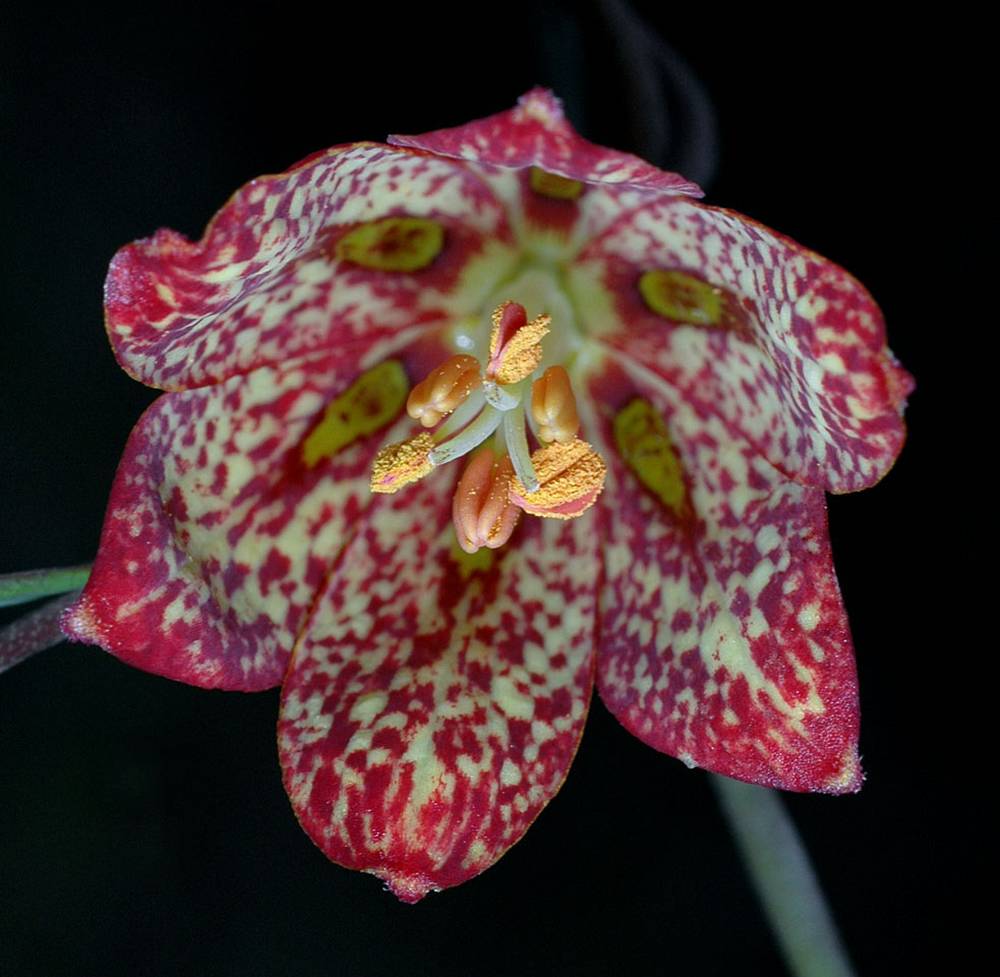
Stem 10–70 cm.
Leaves in 1–3 whorls of 3–5 leaves per node or alternate, 5–15 cm long; blades broadly linear to oblanceolate.
Flowers perianth segments oblong to oblanceolate, 3–4 cm long, red to purple with yellow mottling, apex weakly recurved or not; nectaries linear, approximately 50% perianth segment length; style branched for 33–50% its length.
Fruits capsules winged.
2n=36.
Dry woodlands. Flowering Apr–May. 100–1600 m. Sisk. Native.
In addition to morphological traits, DNA evidence implies that F. gentneri is a hybrid between F. affinis and F. recurva (Meyers 2006). Whether this proposed hybridization event was recent or older warrants more study.
as described under Fritillaria gentneri
Bulb scales: large several; small numerous. Stem 5-7 dm. Leaves in 1-3 whorls of 3-5 leaves per node proximally, alternate distally, 7-15 cm; blade broadly linear to lanceolate. Flowers spreading to nodding; perianth broadly campanulate; tepals red to purple, clearly mottled with yellow, 3.5-4 cm, apex spreading, not recurved; nectaries linear, 1/2 tepal length; style obviously branched for 1/3-1/2 its length, branches widely spreading, longer than 1.5 mm. Capsules winged.Flowering Apr--Jun. Dry woodlands; of conservation concern; 300--1500 m; Oreg.Fritillaria gentneri is a restricted endemic closely allied with F. recurva and F. affinis, with which it can be confused. Some evidence suggests that it may represent a hybrid between those two species. More study is needed to determine whether it should remain recognized as a distinct species.